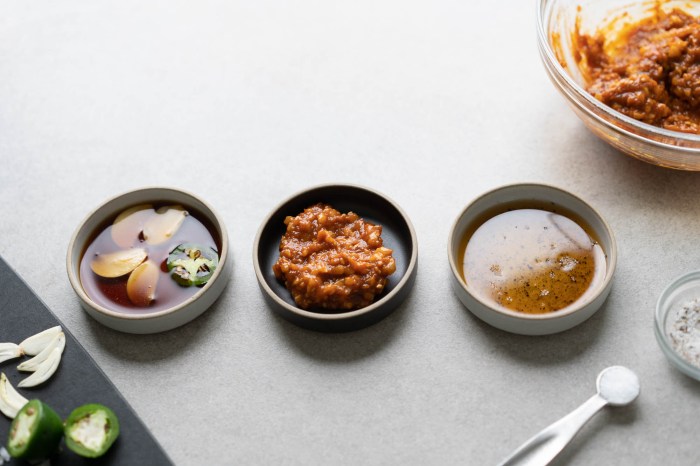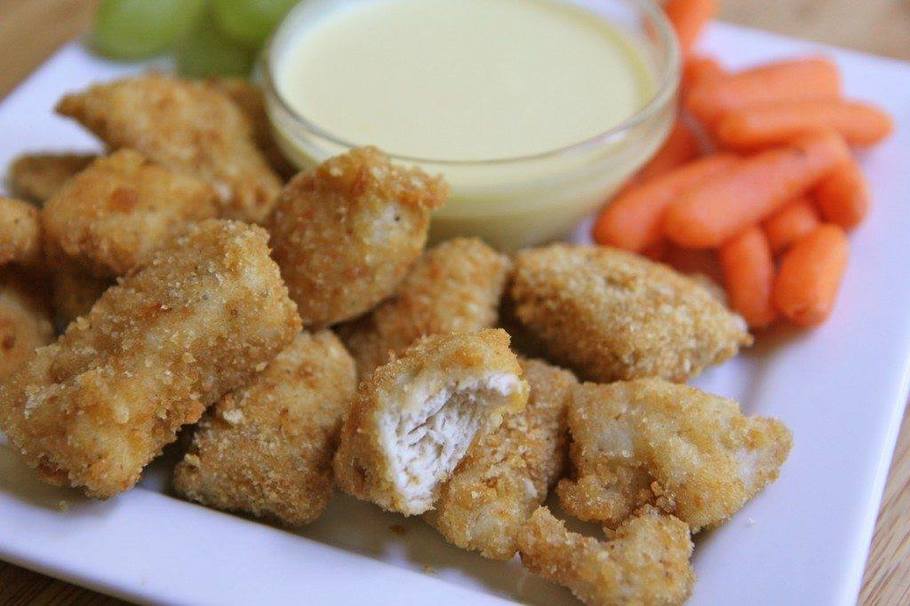Barbecue Dipping Sauce Recipe A Flavorful Guide
Barbecue Dipping Sauces: A Flavorful Exploration: Barbecue Dipping Sauce Recipe
Barbecue dipping sauce recipe – Barbecue dipping sauces, a cornerstone of American culinary culture, boast a rich history and diverse regional variations. Their evolution reflects the blending of indigenous ingredients with those brought by European settlers, resulting in a spectrum of tastes and textures. This exploration delves into the creation of these versatile sauces, from understanding their fundamental components to mastering advanced techniques for unique flavor profiles.
Introduction to Barbecue Dipping Sauces

Source: hungryhuy.com
Barbecue sauces, while often served as a glaze, also function superbly as dipping sauces. Their history is intertwined with the development of barbecue itself, evolving alongside regional preferences for meats and cooking methods. The Carolinas, for instance, are renowned for their vinegar-based sauces, while Kansas City boasts thicker, tomato-based varieties. Texas offers a range from vinegar-based to tomato-based options, often incorporating a significant amount of spice.
A good barbecue dipping sauce possesses a balance of sweet, sour, and savory notes, with a pleasing viscosity that clings to the food without being overly thick or watery. The ideal consistency allows for a satisfying coating, enhancing the flavor of the meat without overpowering it.
Essential Ingredients and Their Roles

Source: seriouseats.com
The foundation of any great barbecue dipping sauce lies in the careful selection and proportioning of its key ingredients. Each component plays a vital role in shaping the final flavor profile and texture.
Vinegar provides acidity, balancing the sweetness and adding a tangy bite. Different sweeteners, such as sugar, honey, or molasses, contribute varying levels of sweetness and complexity. Sugar offers a simple sweetness, honey imparts floral notes, and molasses adds a deeper, richer sweetness with hints of bitterness. Spices and herbs, including paprika, garlic powder, and cumin, enhance the overall flavor profile with smoky, savory, or herbaceous notes.
Finally, a thickening agent, such as cornstarch or flour, creates the desired consistency.
| Thickening Agent | Properties | Effects on Sauce | Notes |
|---|---|---|---|
| Cornstarch | Neutral flavor, creates a clear sauce | Produces a smooth, glossy consistency; requires cooking | Best for thinner sauces |
| Flour (All-Purpose) | Mild flavor, creates a slightly cloudy sauce | Produces a thicker, more robust consistency; requires cooking | Suitable for thicker sauces |
| Arrowroot Powder | Neutral flavor, creates a clear sauce | Produces a smooth, glossy consistency; cooks quickly | Good for sauces with delicate flavors |
| Tapioca Starch | Neutral flavor, creates a slightly cloudy sauce | Produces a thick, glossy consistency; cooks quickly | Good for sauces that need to hold their shape |
Recipe Variations and Flavor Profiles

Source: amazonaws.com
The versatility of barbecue dipping sauces allows for endless customization. Below are three distinct recipes, each showcasing a different flavor profile.
While a classic barbecue dipping sauce recipe often relies on vinegar and smoky flavors, consider branching out! For a unique twist, you might incorporate elements inspired by creamy sauces like the one found in this applebee’s parmesan sauce recipe. The parmesan’s sharpness could complement the sweetness of a barbecue sauce beautifully, creating a surprisingly delicious and sophisticated dipping experience.
Experiment and find your perfect balance!
Sweet Barbecue Dipping Sauce: This recipe emphasizes sweetness with a touch of tang. It features a vibrant amber color and a smooth, slightly glossy texture. The sweetness is balanced by a subtle vinegary tang, resulting in a pleasant contrast.
Smoky Barbecue Dipping Sauce: This recipe incorporates smoked paprika and liquid smoke for a pronounced smoky flavor. It has a deep reddish-brown color and a slightly thicker, more viscous texture than the sweet version. The smoky notes are complemented by a balanced sweetness and a hint of spice.
Spicy Barbecue Dipping Sauce: This recipe uses cayenne pepper and chipotle powder for a fiery kick. It exhibits a deep reddish-brown color and a slightly thinner texture than the smoky version, allowing for easy dipping. The intense spiciness is tempered by a balanced sweetness and tang.
Cooking Methods and Techniques
Creating a basic barbecue dipping sauce involves a simple process of combining ingredients and simmering them to achieve the desired consistency. Simmering allows the flavors to meld and the sauce to thicken. Reducing the sauce concentrates the flavors and creates a richer, more intense taste. Achieving the desired consistency requires careful monitoring and adjustment of the thickening agent. Proper storage and preservation are crucial for maintaining the sauce’s quality and preventing spoilage.
Refrigeration is essential, and the sauce can often be stored for several weeks.
Serving Suggestions and Pairings
Barbecue dipping sauces are incredibly versatile and pair well with a wide range of meats and dishes. They enhance the flavor of grilled or smoked meats, such as ribs, chicken, brisket, and pulled pork. They can also be used as a dipping sauce for vegetables, fries, or even as a marinade for meats before grilling.
- Use as a glaze for roasted vegetables.
- Incorporate into a burger sauce.
- Use as a dipping sauce for chicken wings.
- Add to chili or stews for extra flavor.
Advanced Techniques and Flavor Experimentation, Barbecue dipping sauce recipe
Elevating your barbecue dipping sauce involves exploring the use of more nuanced ingredients and techniques. Smoked paprika or chipotle peppers can deepen the smoky flavor profile, while the addition of fruits like mango or pineapple adds unexpected sweetness and complexity. Balancing sweet, sour, and spicy elements requires careful attention to the proportions of each ingredient. Experimentation with unexpected ingredients, such as coffee or dark chocolate, can lead to unique and memorable flavor combinations.
Question Bank
Can I make this sauce ahead of time?
Yes, barbecue dipping sauce can be made ahead of time. Store it in an airtight container in the refrigerator for up to a week.
What can I do if my sauce is too thick or too thin?
If too thick, add a little water or vinegar. If too thin, simmer uncovered to reduce and thicken.
What are some alternative thickening agents?
Besides cornstarch and flour, you can use xanthan gum or arrowroot powder as thickening agents.
Can I freeze barbecue dipping sauce?
Yes, you can freeze barbecue dipping sauce for up to 3 months. Allow it to thaw completely in the refrigerator before using.





















